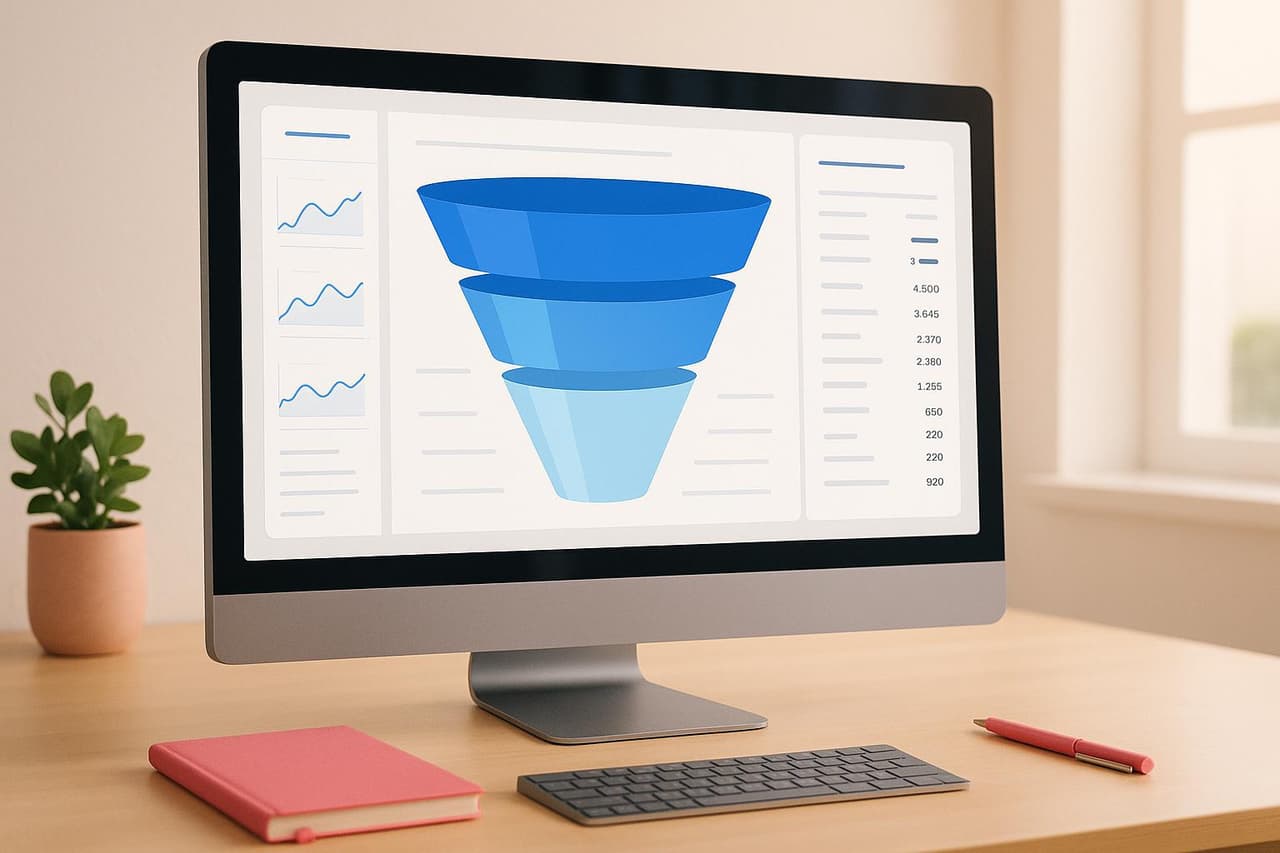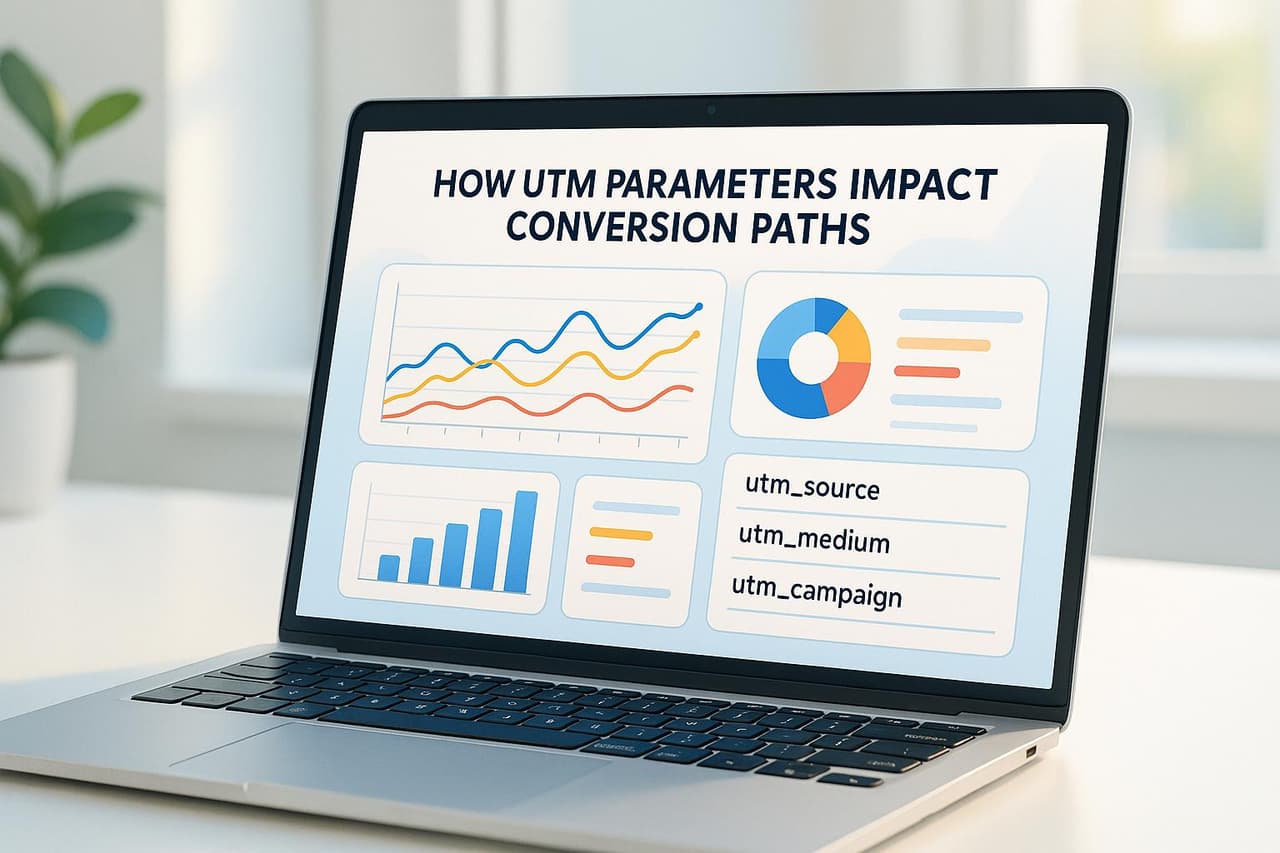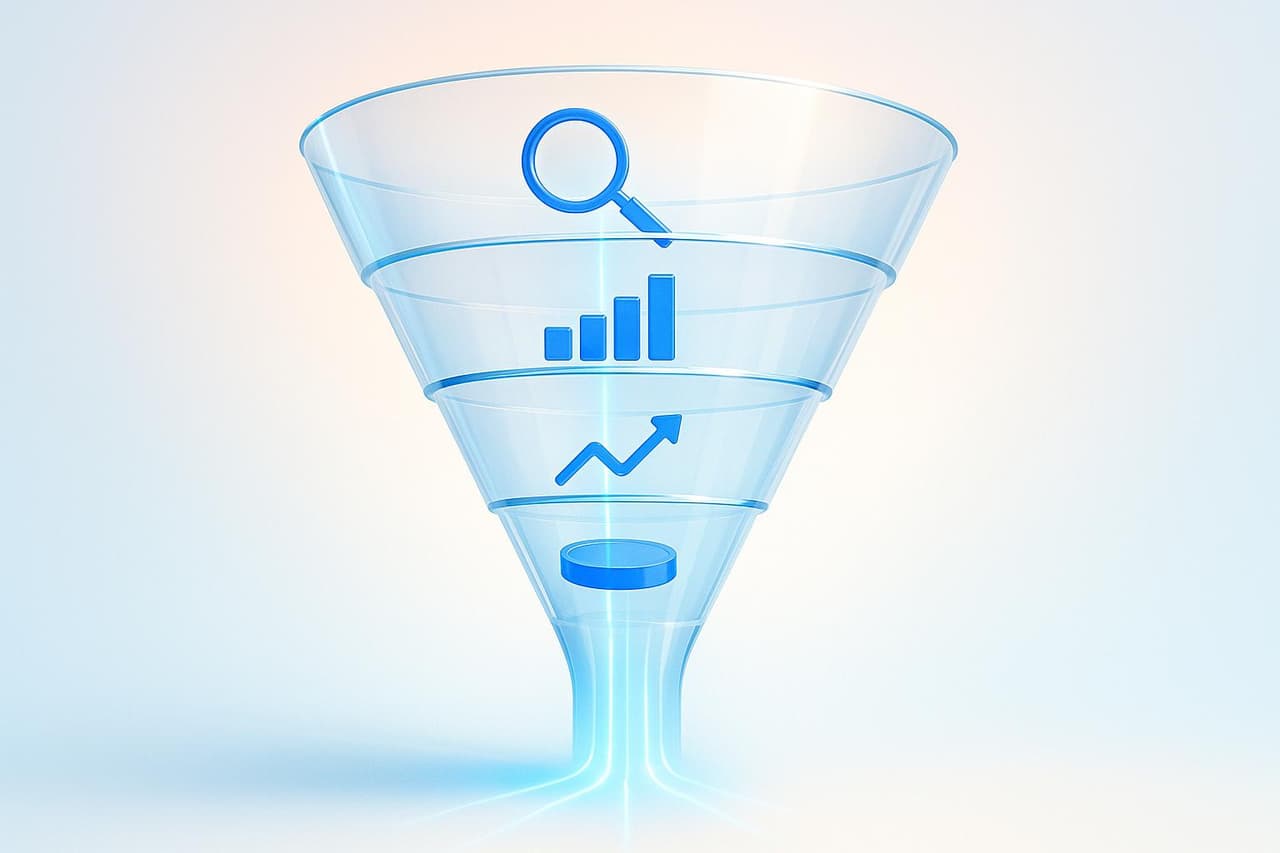
Funnel behavior tracking helps you understand why users drop off before converting. With only 4.6% of visitors completing a purchase and 54% abandoning brands after one bad experience, tracking tools can pinpoint issues and improve conversions. Here are five tools to help you optimize your funnel:
- Mixpanel: Tracks user flows, conversion rates, and traffic channels.
- Amplitude: Maps user journeys and cross-channel behavior.
- Heap: Automatically captures user interactions for detailed analysis.
- Hotjar: Visualizes user behavior with heatmaps and session recordings.
- PIMMS: Tracks mobile app conversions and integrates with platforms like Shopify.
Quick Comparison
Find the tool that fits your needs and start fixing those "leaks" in your funnel today.
What is Mixpanel?
 Mixpanel
Mixpanel
Why Track Funnel Behavior
Tracking sales funnel behavior helps identify where customers drop off, making it easier to address issues and improve results.
Track User Paths
Understanding how customers navigate from entry to conversion - or where they abandon the process - provides powerful insights. For instance, 80.74% of online shoppers abandon their shopping carts [5]. By analyzing these paths, businesses can uncover problems like slow-loading pages, confusing layouts, or common exit points, and determine what works best for conversions.
Take Paltalk, a U.S.-based B2C chat service, as an example. They used heatmaps to discover that users were struggling with their virtual gifts menu. After redesigning it based on this data, they saw an 11.32% boost in conversion rates [2].
These insights enable businesses to make smarter, more informed decisions.
Make Better Decisions
Data-backed decisions lead to tangible improvements.
"Analyzing how customers naturally interact with and behave on websites provides rich insights for evidence-based enhancements." - Mike Hakob, Co-Founder of FormStory [3]
Here’s a quick look at how load time impacts conversion rates:
Reducing load time from 3.3 seconds to 2.4 seconds can increase conversion rates by about 0.4%. Walmart demonstrated this when they found that every 1-second improvement in page load time resulted in a 2% increase in conversions [4].
These kinds of insights are essential for refining marketing strategies and evaluating ROI.
Measure Marketing ROI
Using insights from user behavior and data-driven decisions, businesses can accurately track ROI to determine which channels deliver the best results. With the average online purchase involving over 30 touchpoints [8], understanding what works is critical.
For example, an online clothing retailer analyzed their Google Ads performance through funnel tracking. By identifying expensive but underperforming keywords and reallocating their budget, they achieved a 50% increase in ROI within three months [7].
Tracking ROI offers several advantages:
- Highlighting the most effective marketing channels
- Pinpointing areas where conversions stall
- Optimizing budget allocation
- Boosting customer retention
This is especially important when you consider that selling to existing customers has a 60-70% success rate, compared to just 5-20% for new customers [6]. By monitoring behavior throughout the funnel, businesses can focus their efforts where they’ll see the biggest payoff.
5 Best Funnel Tracking Tools
Tracking and analyzing funnel performance is crucial for identifying weak spots and improving conversions. Below are five tools designed to help you monitor and optimize your funnel strategies. Each tool comes with its own set of features to address specific tracking needs.
1. Mixpanel
Mixpanel excels at tracking user flows, providing detailed insights into conversion rates and segmentation. It also tracks UTM parameters, helping you pinpoint your best-performing traffic sources and measure time-to-conversion metrics [9].
With Mixpanel, you can generate funnel reports that highlight:
- Conversion rates by traffic channel
- Key drop-off points in the customer journey
- Segmentation-based performance analysis
- Timeframes for conversions
2. Amplitude
 Amplitude
Amplitude
Amplitude focuses on mapping user journeys and understanding behavior across various channels. A notable example is Patreon, which used Amplitude’s funnel analysis to implement "blurred posts" on creator pages, resulting in a significant increase in pledge conversions [1].
3. Heap
 Heap
Heap
Heap simplifies data collection by automatically capturing user interactions and enabling historical tracking. For example, in a study of a quiz funnel with 132,000 views, 36,300 submissions, and 30,600 result views, Heap revealed a 23.1% conversion rate [10].
4. Hotjar
 Hotjar
Hotjar
Hotjar lets you track up to ten funnel steps using page views, element clicks, or custom events [11]. This tool is particularly valuable for visualizing user behavior and identifying trends.
Key features include:
- Session filtering for targeted analysis
- Comparison of up to five funnels
- Multiple visualization options
- Insights into conversion trends
5. PIMMS
 PIMMS
PIMMS
PIMMS is tailored for smart link sharing and mobile app conversion tracking. It bridges the gap between marketing efforts and revenue by integrating seamlessly with apps like Stripe and Shopify.
Key capabilities:
- Real-time analytics for clicks and sales
- Advanced UTM filtering
- Device and location-based tracking
- Revenue-focused integrations
It starts here
If you made it this far, it's time to grab 10 free links.
10 smart links included • No credit card
Picking the Right Tracking Tool
Check Your Funnel Needs
Map out your customer journey, starting from the first interaction all the way to the final conversion. With e-commerce sites converting just 2% of visitors and 70% of shoppers abandoning their carts [13], understanding your funnel's specific requirements is key.
Identify the critical touchpoints in your funnel and determine what kind of tracking capabilities you need. This might include:
- Basic funnel visualization
- Advanced tracking of user behavior
- Multi-touch attribution to understand the impact of various channels
- Real-time analytics for immediate insights
- Tracking for mobile app interactions
"Marketing funnel tools allow business owners the opportunity of scaling their business while offering a fully automated and instant product to their customers. Building a funnel takes time and skill to build the right level of conversion and automation. You don't want to launch a new funnel that you haven't tested or built on the fly." [12]
Once you've outlined your needs, look at how well potential tools integrate with your current systems to ensure smooth tracking and data flow.
Review Tool Connections
Integrated sales and marketing systems are 70% more likely to drive revenue growth [15]. To maximize efficiency, choose tools that seamlessly connect with your existing tech stack.
"When every funnel component is integrated, you build an efficient, automated, and downright unstoppable conversion engine." [14]
These integrations give you a unified view of customer behavior, making it easier to act on insights and improve performance across your funnel.
Compare Costs and Growth
After assessing integration capabilities, consider the cost of the tools in relation to their scalability. Look for solutions that offer pricing flexibility and can grow alongside your business.
Focus on tools that provide:
- Tiered pricing options to fit your budget
- Essential features without extra costs
- Automation to save time and resources
- Quick response support (teams responding within an hour are 7x more likely to qualify leads [16])
For SaaS businesses, aim for a customer lifetime value (LTV) that’s at least three times higher than your customer acquisition cost (CAC) [17]. The right tracking tool will strike a balance between upfront expenses and long-term revenue potential, helping you optimize your funnel's overall performance.
Summary
Tracking your sales funnel is a must. In fact, 68% of decision-makers globally gather data on how customers interact with different channels [18]. Why? It helps pinpoint where users drop off and fine-tune the conversion process. These insights make selecting the right tracking tools a no-brainer.
Look for tools that offer full visibility into user behavior and integrate effortlessly with your existing systems. One standout option is PIMMS, which simplifies the user journey by directing traffic to the correct mobile apps. It also provides real-time analytics, tracking clicks, leads, and conversions with advanced filtering features - giving you a clear edge in optimizing funnel performance.
Here are some key elements to keep in mind:
FAQs
How do funnel behavior tracking tools help reduce cart abandonment?
Funnel behavior tracking tools are a game-changer for businesses aiming to understand where potential customers abandon the purchasing process. Whether it's a confusing checkout flow or surprise fees at the last step, these tools help pinpoint the exact pain points. With this insight, companies can streamline the checkout process, maintain clear pricing, and introduce helpful options like guest checkout. The result? A smoother shopping experience that motivates customers to complete their purchases.
Beyond addressing drop-offs, these tools also shed light on customer preferences. Armed with this data, businesses can craft tailored marketing strategies and retargeting campaigns. Not only does this help recover missed sales, but it also builds trust with customers - leading to stronger conversion rates and fostering long-term loyalty.
What should I look for in a funnel tracking tool for my business?
When choosing a funnel tracking tool, it's important to focus on what fits your business goals. Start with the features and functionality - you’ll want a tool that offers detailed analytics, tracks user behavior, and provides clear visuals of the customer journey. Next, check its integration capabilities to ensure it works smoothly with your existing systems, such as CRM platforms or e-commerce tools, making your processes more efficient. Don’t overlook pricing and scalability - pick something that not only fits your budget now but can also adapt as your business grows. Finally, a tool with an intuitive interface and reliable customer support can make all the difference in how effectively your team uses it.
How do integrations make funnel tracking tools more effective?
Integrations play a key role in improving funnel tracking tools by allowing smooth data sharing across different systems. By linking platforms like CRM software or marketing automation tools, businesses gain a full picture of customer interactions. This makes it easier to monitor user behavior across various touchpoints, pinpoint where users drop off, and adjust strategies to boost engagement and drive conversions.
On top of that, integrations provide real-time data updates, enabling teams to respond quickly with accurate insights. This simplifies tasks like lead nurturing, helping marketers send timely and relevant messages, which leads to better outcomes and improved efficiency.



